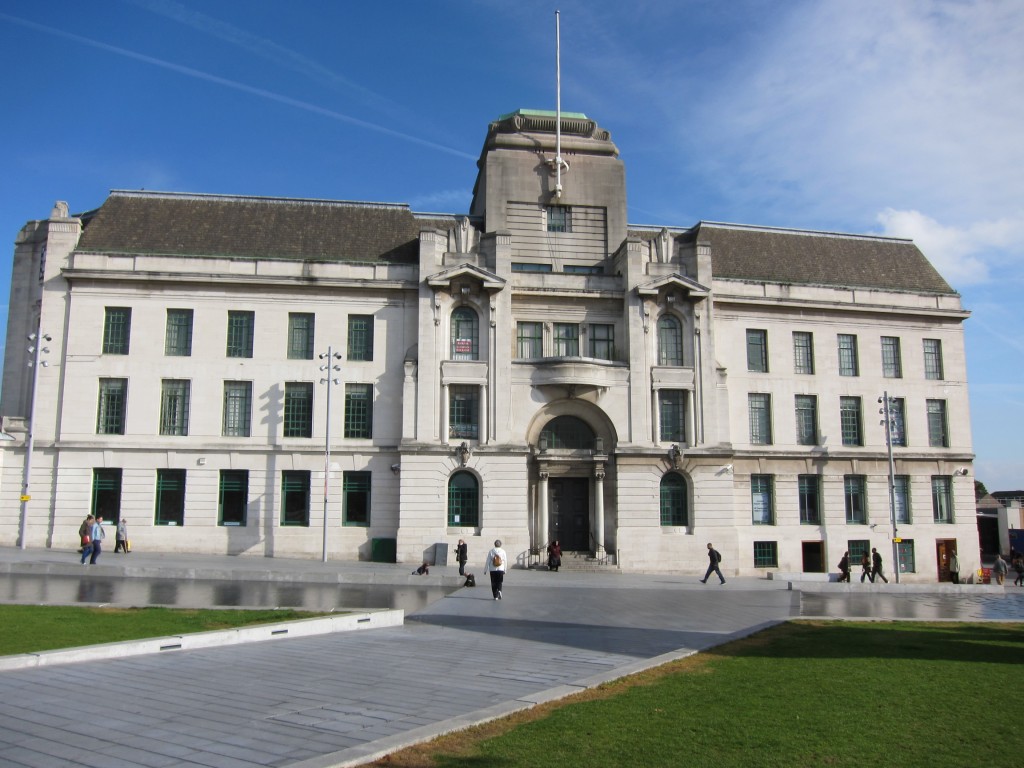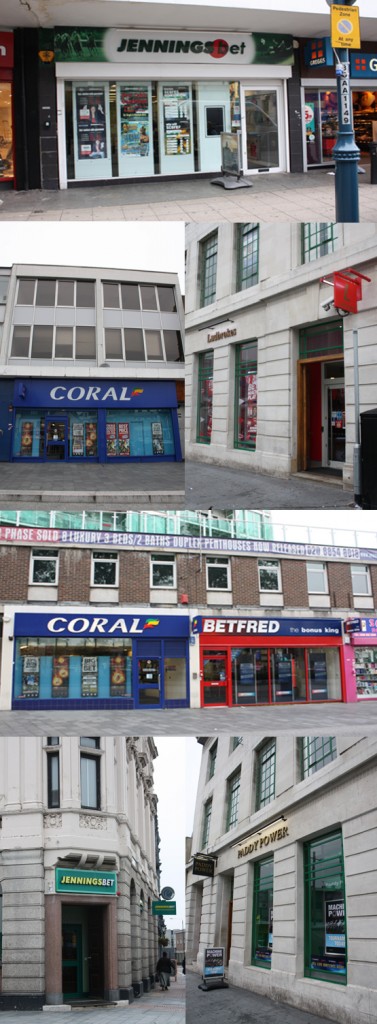
There’s been some good news about the regeneration of Woolwich recently, and some not so good news. Good that planning permission has been given to a development which will preserve the art deco Co-op building on Powis Street, not so good that there will be yet another betting shop in Woolwich, and that permission has been refused for The Woolwich, a new, potentially transformational pub that pub chain Antic want to open in Equitable House.
The 853 blog covers the story about The Woolwich pub very thoroughly. Suffice to say that Antic seem to have a reputation for creating good, up-market pubs and they express sensible ideas about making General Gordon Square into a great public space that is used by people at all times of the day and evening – something we caught a brief glimpse of during the Olympics and paralympics – rather than mainly a pedestrian thoroughfare. They plan to reapply for a licence for The Woolwich, hopefully dealing with the council’s concerns about limiting noise impact from music events and possible problems from being in a “saturation area” where there are a number of other licenced premises.

“The Woolwich” building society was an important part of Woolwich life for over a century, and a key part, with the RACS, of the growth of mutualism in the area. I think it would be highly appropriate if its name could be preserved somewhere in the town, and nowhere better than in the former building society’s headquarters, Equitable House. Commemorating “The Woolwich” as a pub is also quite apt as it could be argued that the Society started in a pub. According to Collin Brooks’ book “The First Hundred Years of the Woolwich Equitable Building Society” the Castle Inn in Woolwich was the venue in 1842 for the predecessor to the Woolwich – a terminating building society chaired by the pub proprietor, Mr Thunder. Terminating building societies were set up to build houses for all their members, after which they terminated. It was five years later, in September 1847 that a breakaway faction from this society formed the “permanent” Woolwich Equitable Benefit Building and Investment Association. However they moved away from the Inn, to what was then 145 Powis Street (later renumbered 131), and their first patron was a Dr John Carlile, Pastor of the Congregationalist Salem Chapel. They also had as president William Stuart, who was Surgeon to the Police, Surgeon to the Marine Society’s ship Warspite and also Public Vaccinator for Woolwich.
The Society was located at a couple of addresses in Powis Street, including offices they had built at 111-113, before the construction of Equitable House in 1934-5. Collin Brooks is very enthusiastic about the building of which he says “no photograph can do justice to so well-designed a structure”, but he reserves his greatest praise for the interior:
Its interior is remarkable for two qualities – spaciousness and quietude. Its executive rooms are lofty, dignified and well lighted. They are panelled in English oak, and their carved adornments are adequate but restrained. The furniture and appointments of its rooms are of the same handsome but unostentatious quality.
The tone of the interior is, indeed, set by the entrance hall. One mounts the stairs from the street to an oblong plateau, very lofty, and very quiet, for here, as everywhere, a quarter inch rubber flooring muffles all sound. The row of cashiers’ grills which confront one, and the two sets of writing desks, right and left, facing them, are identical with those which one would meet in a great New York banking house. High above the plateau runs a balcony of polished stone. No matter how much business is in process of transaction there is an air of quiet efficiency, an absence of fuss, an absence of confusion. The waiting client or inquirer on either of the two great twin walnut settles receives the impression of tremendous solidity, of skilled smoothness, of good taste – if a building can be said to be embodied courtesy this (he must think) is such a building. This plateau is known as the Banking Hall, and it was here, under the picturesque glass and metal roof, in the marble walls, between the silver grilles and the great walnut screen which divides the hall from the vestibule that the ceremonial opening of the building took place on Tuesday 14 May 1935. It was a ceremony honoured with the presence of no fewer than three of His Majesty’s ministers – the Viscount Hailsham, Secretary of State for War, the Rt. Hon. J.H. Thomas, Secretary of State for the Dominions, and the Rt. Hon. Sir Kingsley Wood, the Postmaster General.
The Banking Hall is the proposed location for The Woolwich pub. I wonder if it still has the Hopton Wood stone walls and coursed and polished Derbyshire fossil skirting mentioned in the British Listed Buildings description.
Equitable House was a technological pioneer for its time, with all departments linked by telephone and a pneumatic chute for transporting pass books around the building. Its accounting department boasted thirty-nine book-keeping machines, developed in collaboration with the Burroughs Adding Machine Company, plus twenty-six calculating machines, forty-seven listing machines and four machines for cashiers to record cheques and cash. But what most interested visitors was the innovative way of notifying one of the twelve principals when they were wanted on the phone if they were not at their desk – their number would be illuminated on each of the 46 electric clocks in the building. A method that only worked as long as there were just 12 directors.
There is an online petition asking the Royal Borough of Greenwich Council to grant Antic a licence for “The Woolwich” here.

The Council’s decision to approve Dagmar Ventures Limited’s application to convert the Co-op building in Powis Street into 73 flats above ground floor retail space looks like very good news. The neglected art-deco building had been threatened with demolition, and even though the Woolwich Master Plan said that it “should be converted to high specification residential development” there wasn’t an approved, funded plan to achieve this. Some compromises have been made; the horizontal window layers will be turned into balconies for the flats, and the building will be extended upwards by three storeys, though in such a way as to minimise the impact on the building’s tower. I was glad to see that the planning meeting stressed that “in particular that steps be taken to restore and replace the tiles of the external building in keeping with the geographical history of the environment”; one of the conditions of approval is that the Planning Authority has to approve the materials for the repair work to the outside of the building before work starts. Also plans showing how the staircase will be retained and incorporated into the development must be submitted and approved by the Council. The regeneration of the West end of Powis Street is starting to look optimistic; next step is to get the Granada Cinema restored as an entertainment venue!

Woolwich already has seven betting shops, and it now looks like there will be an eighth – there’s a notice in the window of the former Pizza Hut restaurant, next to Holland and Barrett saying that a licence for another Betfred betting shop has been applied for. That will make two Betfreds, two Corals, two Jenningsbets, a Ladbrokes and a Paddy Power in Woolwich town centre. According to a tweet by local councillor John Fahy there is little chance of stopping the increasing number of betting shops without a change in the law. This seems to be a problem affecting many town centres – for example the Deptford Dame blog documents the long battles of Deptford residents to prevent more betting shops being set up in their town centre. Not being a betting person I find it difficult to understand how so many betting shops in such a small area manage to make money. According to a Guardian article it is through so-called fixed odds bettting terminals (fobts), which allow punters to bet up to £100 every 30 seconds and which make an estimated £297 million a year from problem gamblers. No more than four fobts are allowed in any betting shop, but they seem to be so lucrative that it’s worth opening another betting shop near 7 others in order to get another four fobts. The Deptford Dame includes a link to another online petition asking Eric Pickles to give local councils control over the number of betting shops in their area.
Although it’s not all good news I’m optimistic about the regeneration of Woolwich town centre, maybe because the Co-op decision is a sign that the Master Plan might be feasible. If you have views about the town centre’s development, Councillor Fahy has arranged a “Support the Woolwich Town Centre” public meeting at the Grand Theatre in Wellington Street at 6pm on the 23rd of October. And if you find the idea of a meeting about the town centre too frightening you could always book up for the Grand’s Halloween showing of the original Dracula film, Nosferatu, with a live piano accompaniment courtesy of James Buckham, followed by a little ghost tour of the building.
